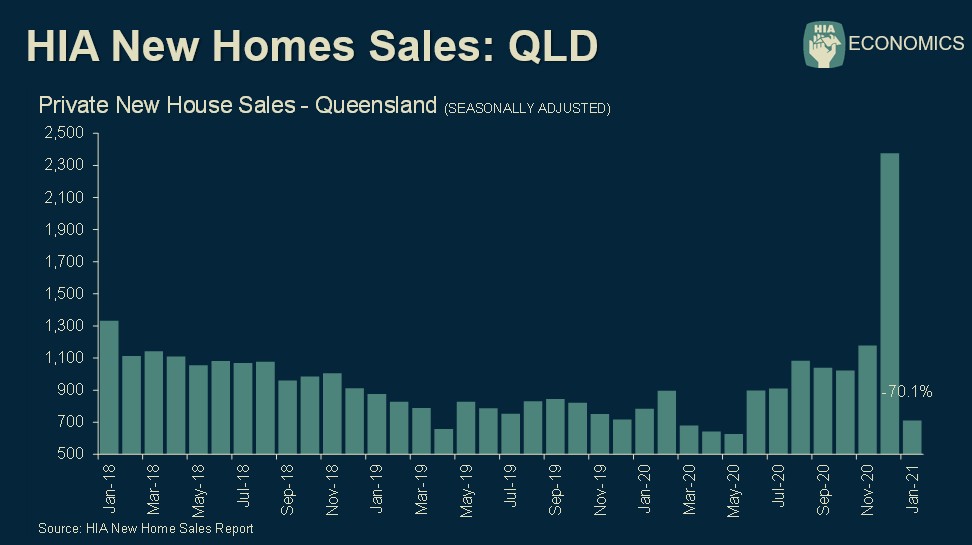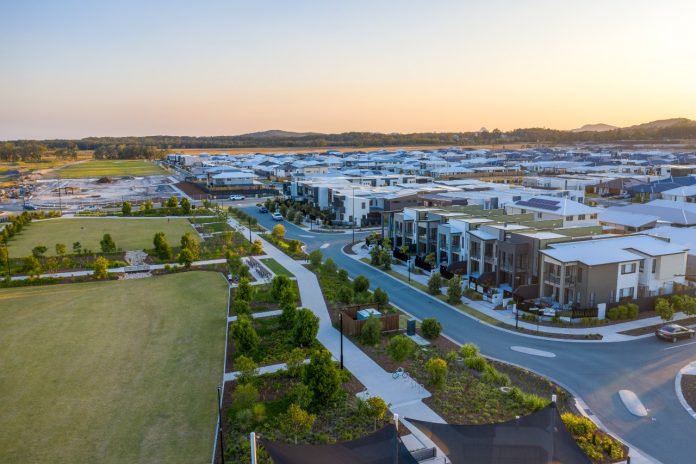The impact of COVID, including record home building and interstate migration, will continue to be felt for several years on the Sunshine Coast, a leading housing economist has predicted.
Housing Industry Association (HIA) chief economist Tim Reardon said while the huge demand for new homes would eventually drop off, the Coast would not fall to a “sustainable” level until 2025.
That meant another four years of buyers competing for scarce new blocks of land, the battle fuelled by migration, stimulus grants and low interest rates.
Mr Reardon will share his predictions for the home building sector at an Industry Outlook Breakfast at Maroochy Surf Club on Thursday.
He told sunshinecoastnews.com.au that demand for detached housing was a major social shift to emerge from the coronavirus pandemic, with more people migrating to the regions and preferring houses as apartments fell out of favour.
Get your fix of local stories by receiving our FREE daily news bulletin: Go to SUBSCRIBE at top of this article to register
HIA figures show new home sales in Queensland peaked dramatically in December 2020 before dropping in January 2021 because of land constraints.
Apartment sales were down and not expected to recover until 2021/2022.

Mr Reardon said after the extreme growth of 2020, home building demand was expected to continue in 2021 and 2022, with a record 130,000 housing starts in Australia this year.
First home buyers, who currently account for about 43 per cent of new home loans according to the HIA, would remain a major driver of demand in 2022.
“The shock of the 2020 pandemic will have a ripple effect that will last a couple of years,” he said.
However, Mr Reardon said demand would start to fall off in 2023 as influencing factors, such as migration, stimulus payments and low interest rates, began to shift and would return to a sustainable level in 2025.
The Sunshine Coast has Australia’s highest interstate migration rate, according to the REIQ, which has been pushing up the value of property and contributing to a housing and rental crisis.
- Related story: Council explores solutions to Sunshine Coast’s housing crisis
- Related story: How to win the rental lotto in the Sunshine Coast’s tenancy crisis
But Mr Reardon said migration would begin to slow down in the next 18 months to two years and about 15 per cent of those new residents would eventually return down south.
He said 2020 was the year people brought forward their plans to retire and move to south-east Queensland but that trend would not continue.
Do you have an opinion to share? Submit a Letter to the Editor with your name and suburb at Sunshine Coast News via: news@sunshinecoastnews.com.au
“The population shift doesn’t sustain for multiple years. If you were going to relocate, 2020 was the year and people were drawing forward their retirements which accelerated that but we’re not going to see the shift from Victoria and NSW continue,” Mr Reardon said.
“When overseas migration returns, which means jobs and education in those areas, we will see some people shift back to Sydney and Melbourne. About 85 per cent will remain.”
Mr Reardon said the Federal Government’s stimulus grants coming to an end in March would also impact sales which were being fuelled by homebuyers flush with grants, early release superannuation, and more savings from not spending on travel and entertainment.
The HomeBuilder grant (which was extended to March 31) was $25,000 until December 31 but was reduced to $15,000 for contracts until the end of March 2021.
First time home owners are also eligible for the $15,000 first home buyers’ grant while some have been able to access up to $20,000 from their superannuation.
Mr Reardon also predicted interest rates, which were currently at 0.1 per cent, would begin to rise from 2023, boosted by returning economic activity and wages growth, further contributing to a normalisation of housing.
He said the Sunshine Coast had among the most expensive land in Australia for most of the past decade and one of the reasons appeared to be the timeframe for approvals through council.





